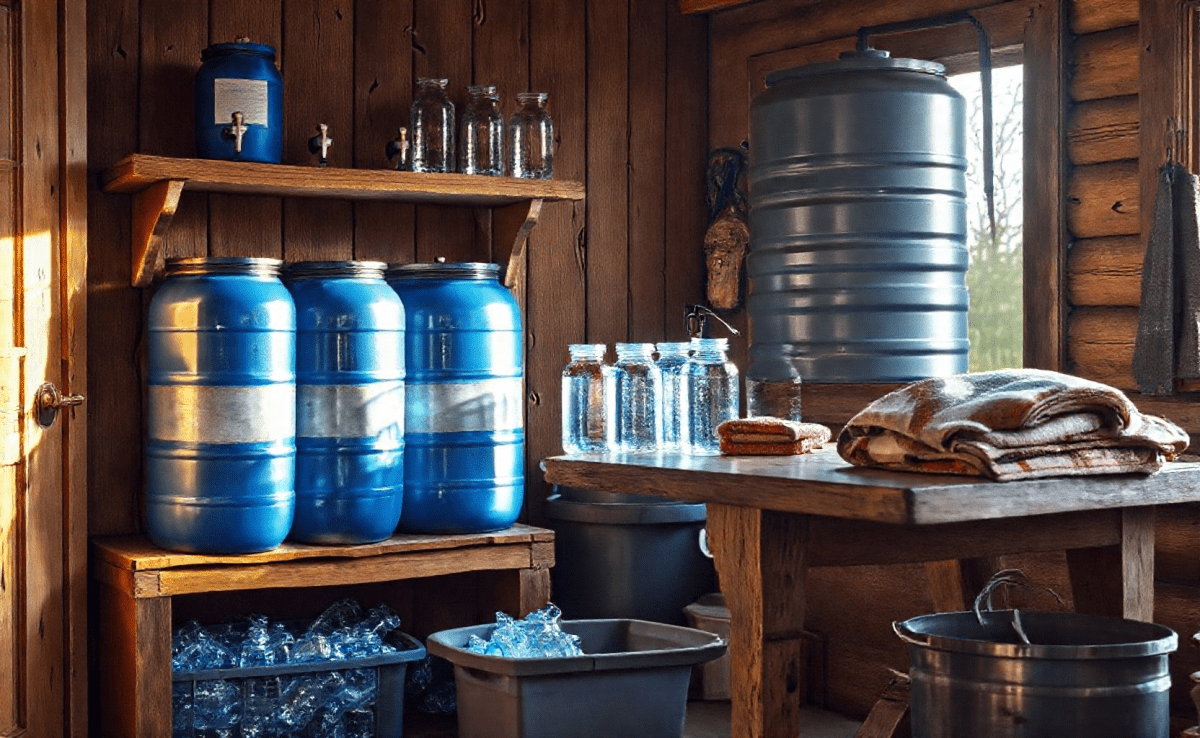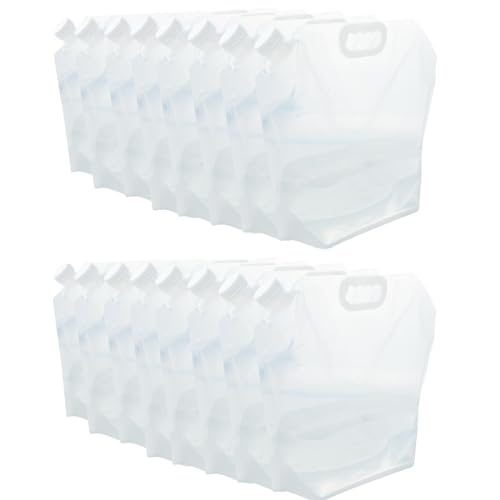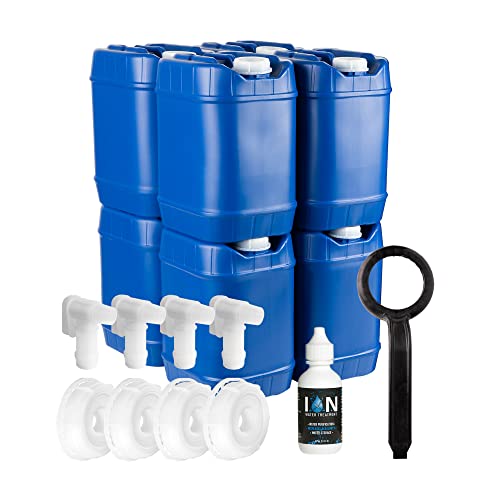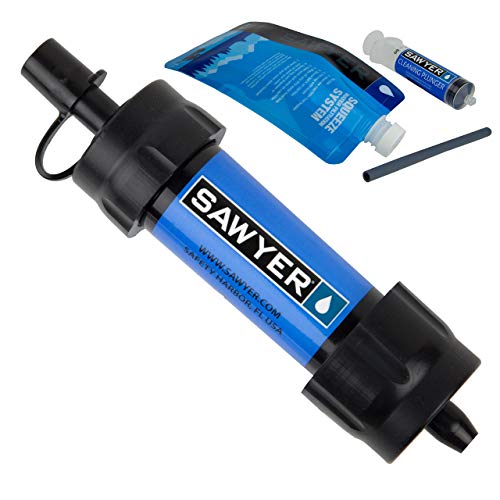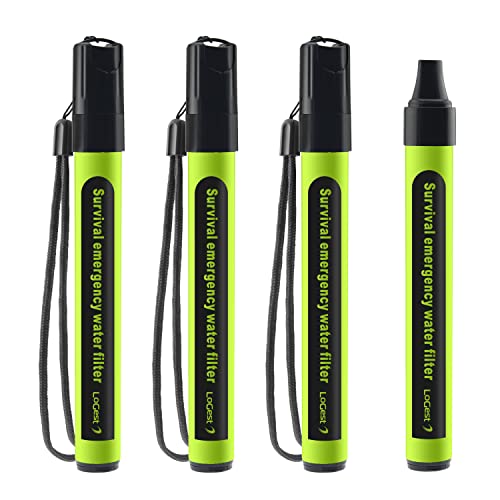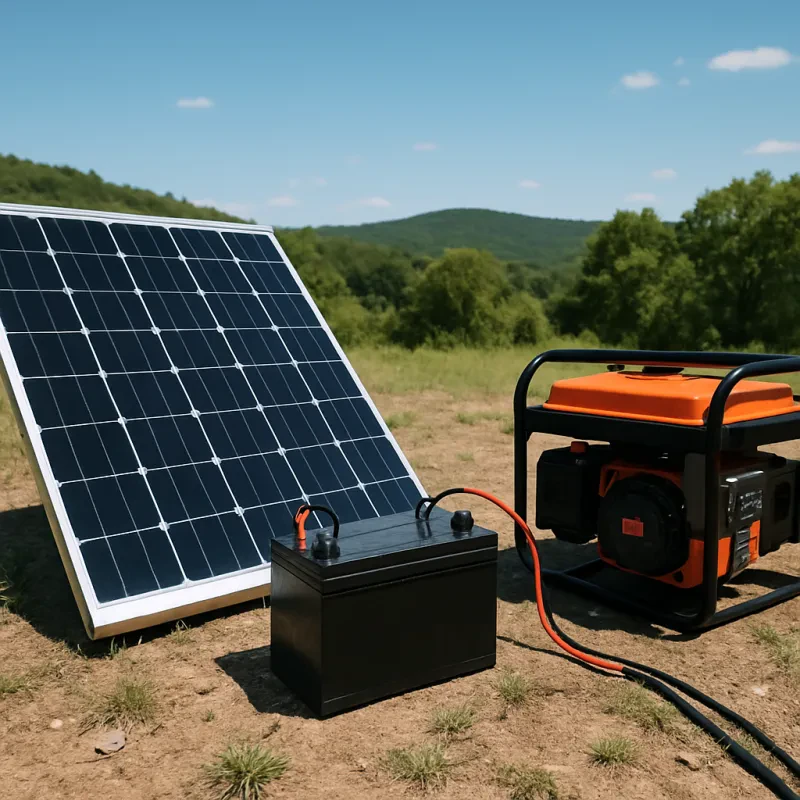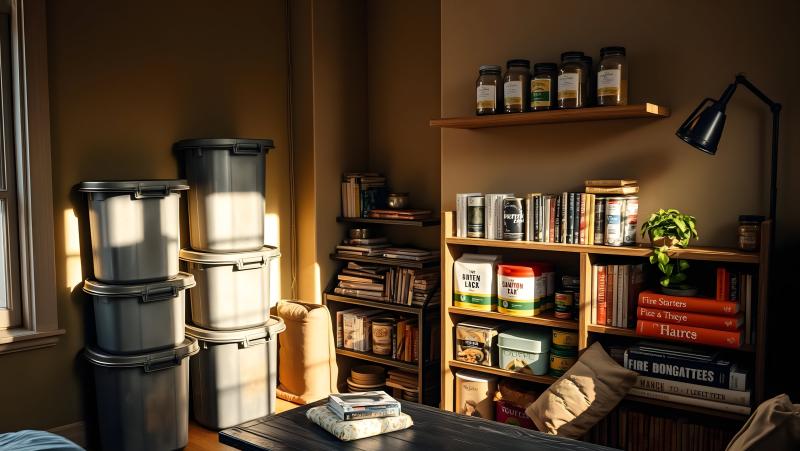Prepping 101: The Best Methods for Storing Drinking Water for Survival
Water is the most essential resource for human survival. Without access to clean, potable water, our bodies cannot function properly, and we face the risk of dehydration, illness, and even death. During emergencies and disasters, the vulnerability of our water supplies becomes increasingly apparent. Natural disasters, infrastructure failures, and other crises can disrupt the availability and distribution of water, leaving individuals and communities without a reliable source. Recognizing the critical role of water in survival is the first step in ensuring that you and your loved ones are prepared for any eventuality.
Disasters, whether natural or man-made, can have a devastating impact on water infrastructure, leading to contamination, disruption, or even complete loss of access to clean drinking water. In the aftermath of a hurricane, for example, floodwaters can contaminate local water sources with sewage, chemicals, and other pollutants. Similarly, a power outage during a winter storm can prevent the proper treatment and distribution of municipal water, leaving residents without a safe supply. The need for a readily available and well-maintained water storage system becomes paramount in these situations, as it can mean the difference between survival and life-threatening dehydration.
Preparing for emergencies by storing an adequate supply of drinking water is a crucial aspect of any comprehensive survival plan. By ensuring that you have a reliable and accessible water source, you can provide for your basic needs and maintain your health and well-being during times of crisis. This proactive approach not only enhances your personal resilience but also contributes to the overall preparedness of your community, as self-sufficient individuals can reduce the strain on limited resources and aid in the recovery efforts.
Key Takeaways
- Storing drinking water for emergencies is crucial for survival
- Calculate your water storage needs based on the number of people and duration of emergency
- Choose food-grade containers for water storage to ensure safety
- Treat water with chlorine or purification tablets for long-term storage
- Regularly rotate and maintain your water supply to ensure freshness and safety
Determining Your Water Storage Needs
Determining the appropriate amount of water to store for your household is a crucial step in emergency preparedness. The recommended guideline is to have a minimum of one gallon of water per person per day, with an additional half-gallon for pets. This baseline calculation accounts for drinking, cooking, and basic hygiene needs. However, it's essential to consider the size of your household and the potential duration of an emergency when determining your water storage requirements.
For a family of four, for example, the minimum recommended water storage would be 16 gallons per day (4 people x 1 gallon per person) plus an additional 2 gallons for pets, totaling 18 gallons per day. If you anticipate the need to be self-sufficient for a week, your total water storage requirement would be 126 gallons (18 gallons per day x 7 days). It's important to note that this calculation is a starting point, and you may need to adjust the amount based on factors such as climate, physical activity levels, and any additional water needs for sanitation or other purposes.
When planning your water storage, it's also essential to consider the needs of your household beyond just drinking water. Water may be required for tasks like cooking, cleaning, and personal hygiene, as well as for caring for pets or tending to any medical needs. By taking these factors into account, you can ensure that your water storage plan adequately addresses the comprehensive water requirements of your family during an emergency.
Choosing the Right Water Storage Containers
Selecting the appropriate water storage containers is a crucial aspect of emergency preparedness. The market offers a wide range of options, each with its own advantages and considerations. When choosing water storage containers, it's essential to prioritize durability, BPA-free materials, and suitability for long-term storage.
One of the most common and widely available water storage containers is the plastic water bottle or jug. These containers are generally inexpensive, easy to find, and come in a variety of sizes. However, it's important to ensure that the plastic is BPA-free and intended for long-term water storage, as some plastic containers may leach harmful chemicals over time. Another option is the use of food-grade plastic barrels or drums, which can hold larger volumes of water and are designed for extended storage.
For those seeking a more robust and long-lasting solution, water storage tanks made of materials like food-grade polyethylene or stainless steel can be an excellent choice. These tanks are typically larger in capacity and can be installed in dedicated spaces, such as basements or outdoor areas. They often come with features like UV protection and tamper-resistant lids to maintain water quality and prevent contamination.
Proper sealing and labeling of water containers are also crucial. Ensure that all containers are tightly sealed to prevent the introduction of contaminants and to minimize the risk of evaporation. Additionally, label each container with the date of storage and the contents to facilitate easy identification and rotation of your water supply.
42 Gallon Water Storage Containers, Emergency Water Supply
Always be prepared with these durable and reliable 42 Gallon Water Storage Containers for your emergency water supply
Product information
$42.99
Product Review Score
4.22 out of 5 stars
628 reviewsProduct links
Preparing and Treating Water for Long-Term Storage
Ensuring the quality and safety of your stored water is essential for its long-term viability. Before storing water, it's crucial to purify and disinfect it to remove any potential contaminants. This can be achieved through various water treatment methods, such as chlorination or filtration.
Chlorination is a widely used and effective method for disinfecting water. By adding a small amount of unscented household bleach (approximately 8 drops per gallon of water), you can kill harmful bacteria and viruses, making the water safe for storage. It's important to use only fresh, unscented bleach and to allow the treated water to sit for at least 30 minutes before storing it.
Alternatively, you can utilize water filtration systems to remove impurities and contaminants. There are a variety of filters available, ranging from simple pitcher-style filters to more advanced whole-house systems. When selecting a filter, consider factors such as the size of your household, the specific contaminants you want to remove, and the filter's capacity for long-term use.
Once the water has been treated, it's crucial to maintain its quality during storage. Regularly testing the water for signs of contamination, such as changes in color, odor, or clarity, can help you identify any issues early on. Additionally, rotating your water supply by using the oldest stored water first and replenishing with fresh, treated water can ensure that your water remains safe and potable.
Rotating and Maintaining Your Water Supply
| Method | Pros | Cons |
|---|---|---|
| Store-bought bottled water | Convenient, ready to use | Expensive, limited shelf life |
| Water purification tablets | Compact, long shelf life | May leave a taste, not effective against all contaminants |
| Water filtration systems | Effective against most contaminants | Requires maintenance, may be bulky |
| Water storage containers | Can store large quantities | Requires space, may need rotation |
Proper rotation and maintenance of your water storage system are essential for ensuring the long-term viability of your water supply. Establishing a schedule for replenishing and cycling through your stored water is crucial to prevent contamination and degradation.
One effective strategy is to implement a "first-in, first-out" approach, where you use the oldest stored water first and replace it with fresh, treated water. This helps to maintain the quality and freshness of your water supply, as older water may be more susceptible to bacterial growth or other issues.
In addition to rotating your water, it's important to maintain the storage containers themselves. Regularly inspect the containers for any signs of damage, leaks, or deterioration, and address any issues promptly. Ensure that the containers are stored in a cool, dark, and dry location to minimize exposure to heat, light, and humidity, which can accelerate the breakdown of the water.
Furthermore, it's essential to keep your water storage system organized and easily accessible. This can be achieved by labeling each container with the date of storage and the contents, as well as by creating a clear inventory system. This will not only help you keep track of your water supply but also facilitate the efficient rotation and use of your stored water.
By diligently rotating and maintaining your water storage, you can ensure that your emergency water supply remains safe, potable, and readily available when you need it most.
Innovative Water Storage Solutions for Limited Spaces
For individuals and families living in small or confined spaces, finding effective water storage solutions can be a challenge. However, with some creativity and innovative thinking, it is possible to maximize your water storage capacity even in limited areas.
One innovative approach is to utilize vertical storage options. Instead of relying solely on floor-based containers, consider installing wall-mounted or ceiling-mounted water storage systems. These can take the form of stackable water tanks, collapsible water bags, or even repurposed containers that can be mounted on walls or suspended from the ceiling. This vertical orientation can help you make the most of your available floor space while still maintaining a substantial water supply.
Another space-saving solution is to explore under-the-bed water storage. By utilizing the often-underutilized space beneath beds, you can tuck away water containers without sacrificing valuable floor space. These containers can be designed to slide in and out easily, allowing for convenient access and rotation of your water supply.
When it comes to integrating water storage into your home's design and layout, there are numerous creative possibilities. Consider incorporating water storage into built-in cabinetry, under staircases, or even as part of your home's decor. By seamlessly blending water storage into the overall design of your living space, you can maintain a functional and aesthetically pleasing environment while ensuring your preparedness for emergencies.
Regardless of the specific solutions you choose, the key is to think outside the box and explore innovative ways to maximize your water storage capacity without compromising the livability and functionality of your living space.
Ensuring Water Quality and Safety During Storage
Maintaining the quality and safety of your stored water is of paramount importance. Regular monitoring and proactive measures are essential to prevent contamination and ensure that your water supply remains potable and safe for consumption.
One of the primary concerns with long-term water storage is the potential for bacterial growth, such as the formation of algae or the introduction of other microorganisms. To address this, it's crucial to regularly inspect your stored water for any signs of discoloration, turbidity, or unpleasant odors, which may indicate the presence of contaminants.
In addition to visual inspections, it's recommended to periodically test your stored water for any changes in pH, chlorine levels, or the presence of harmful bacteria. This can be done through the use of simple water testing kits or by consulting with a professional water analysis service. By proactively monitoring the quality of your stored water, you can identify and address any issues before they pose a threat to your health and safety.
Proper sanitation and hygiene practices are also essential when accessing your stored water supply. Ensure that you and your family members wash their hands thoroughly before handling the water containers, and use clean, disinfected utensils or cups when dispensing the water. This helps to minimize the risk of introducing contaminants and maintaining the overall cleanliness of your water storage system.
In the event that you do encounter any issues with your stored water, such as the presence of algae or bacterial growth, it's important to take immediate action. This may involve discarding the affected water, thoroughly cleaning and disinfecting the containers, and replenishing your supply with freshly treated water. By staying vigilant and taking proactive measures, you can safeguard the quality and safety of your stored water, ensuring that it remains a reliable and trustworthy resource during times of crisis.
Portable Water Storage Options for On-the-Go Preparedness
In addition to your primary water storage system at home, it's essential to have portable water storage options for on-the-go preparedness. These lightweight and durable containers can be invaluable during evacuation scenarios, outdoor adventures, or when you need to have a reliable water source readily available.
One popular option for portable water storage is the use of collapsible water containers or hydration packs. These lightweight and compact designs can be easily stored in emergency kits, backpacks, or vehicles, allowing you to have access to water when you need it most. Many of these containers are made from BPA-free materials and feature leak-proof closures, ensuring the integrity of your water supply.
Another innovative solution for portable water storage is the integration of water filtration and purification devices. These compact and versatile tools can transform untreated water from various sources into safe, drinkable water. From personal water filters to gravity-fed filtration systems, these devices can be invaluable when you need to access and purify water on the move.
When selecting portable water storage options, it's crucial to consider factors such as capacity, durability, and ease of use. Opt for containers that are lightweight, shatterproof, and designed for easy transport and access. Additionally, ensure that your portable water storage solutions are compatible with your broader emergency preparedness plan, allowing you to seamlessly integrate them into your overall survival strategy.
By incorporating portable water storage and purification into your preparedness efforts, you can enhance your ability to stay hydrated and self-sufficient, even when faced with unexpected challenges or the need to evacuate your primary residence.
40-Gallon Prepping Food Supplies (8 Stackable Containers)
Guaranteed Long-Term Storage for Bulk Prepping Food Supplies - 8 Stackable Containers Included
Product information
$240.00
Product Review Score
4.73 out of 5 stars
555 reviewsProduct links
Integrating Water Storage into Your Overall Survival Plan
Effective water storage is not a standalone endeavor; it should be seamlessly integrated into your broader emergency preparedness and survival plan. By aligning your water storage strategy with your overall preparedness goals, you can ensure that your water supply is a vital and well-coordinated component of your survival strategy.
When developing your water storage plan, it's essential to consider how it fits into the larger picture of your survival resources and supplies. Coordinate your water storage with other essential items, such as non-perishable food, first-aid kits, and emergency communication devices. This holistic approach will help you identify any gaps or interdependencies, allowing you to create a comprehensive and resilient survival plan.
Moreover, regularly reviewing and updating your water storage plan is crucial as your needs and circumstances change over time. As your household size, living situation, or emergency preparedness priorities evolve, be sure to adjust your water storage accordingly. This may involve increasing or decreasing your storage capacity, exploring new storage solutions, or incorporating advancements in water treatment and purification technologies.
By integrating your water storage plan into your overall survival strategy, you can ensure that your preparedness efforts are well-rounded, adaptable, and tailored to your specific needs. This level of coordination and foresight will not only enhance your personal resilience but also contribute to the collective preparedness of your community, as self-sufficient individuals can play a vital role in supporting disaster response and recovery efforts.
